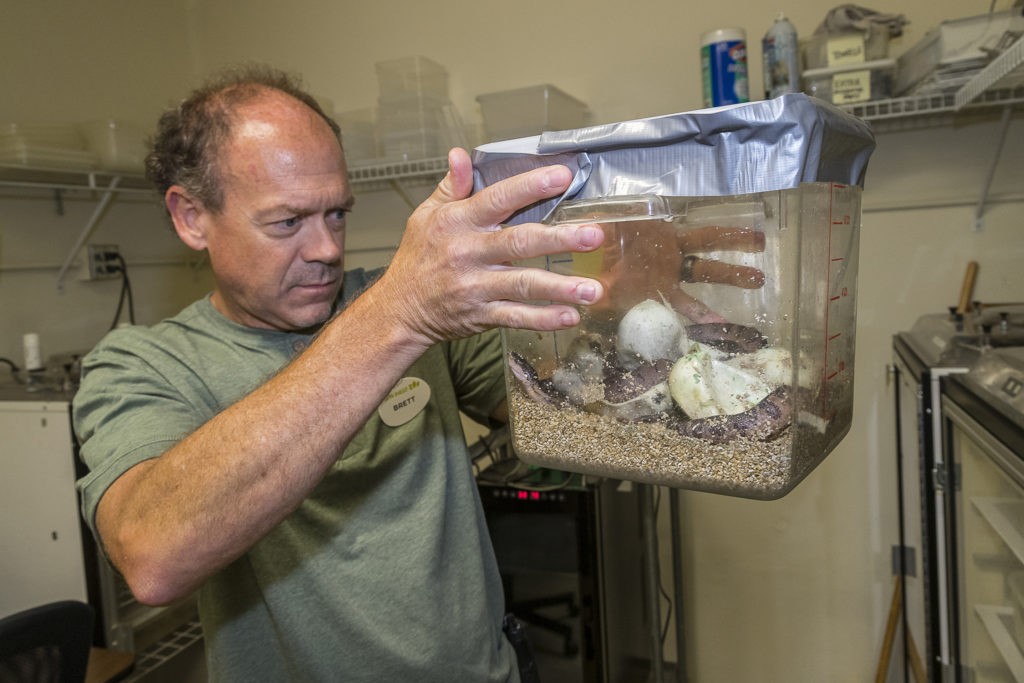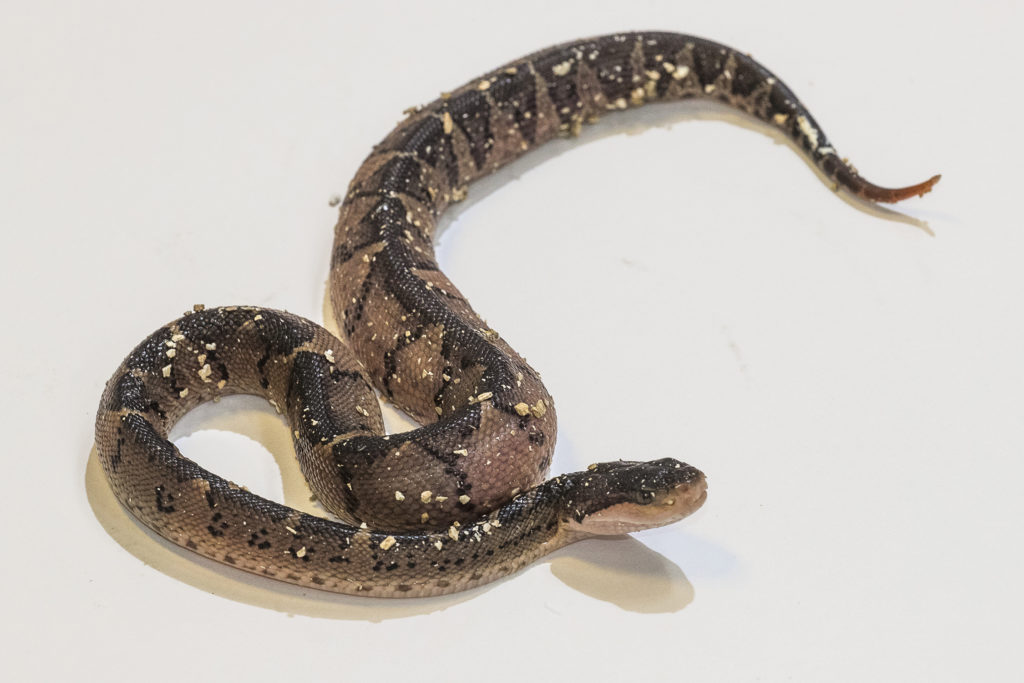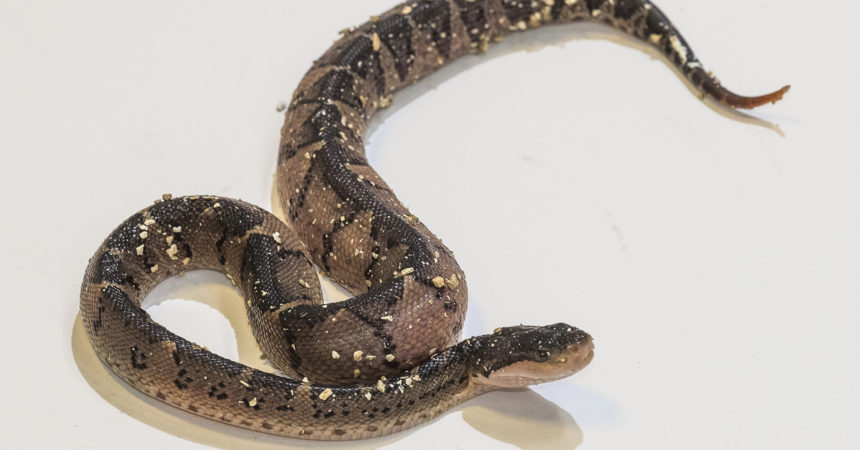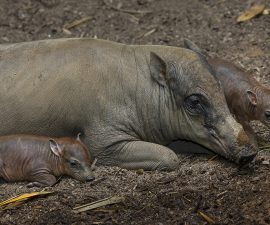Bushmasters are the largest pit vipers in the Americas, reaching up to eight feet in length. They are iconic, apex predators that, like jaguars, are the top predators in their habitat. But while the black-headed bushmaster of Costa Rica is truly impressive, it is rarely seen in the wild, or in zoos.
On May 4, 2019, the San Diego Zoo’s female black-headed bushmaster laid 13 eggs in a nest box on exhibit, and herpetology staff removed the eggs for incubation. Ultimately, six eggs were not viable. However, on July 14, after 71 days, 7 baby black-headed bushmasters slit their eggs and hatched.

This is the first reproduction of black-headed bushmasters at the San Diego Zoo. Only two zoos in the US currently have black-headed bushmasters—and before the arrival of these youngsters, there were just two males and one female. These hatches increase that number to 10.
Bushmasters are unique among New World pit vipers in that they are oviparous, or lay eggs. They can lay up to 16 eggs, with incubation periods from 60 to 80 days. All other species of pit vipers in the Americas—including rattlesnakes, cottonmouths, and many other species from Mexico into South America—are viviparous, meaning that they give live birth or are born in clear embryonic sacs that they push out of at birth.
Bushmasters have very large fangs, rivaling those of the Gaboon viper from Africa, with the longest fangs for a viperid snake. There are five species.
The Central American bushmaster Lachesis stenophrys inhabits the Atlantic lowlands of Nicaragua, Costa Rica, Panama, and Colombia. It is protected in two parks in Costa Rica.

The black-headed bushmaster Lachesis melanocephala has the smallest range. It occurs in the southeastern Pacific lowland regions of Costa Rica in the Osa Peninsula, where most of its population is in Corcovado National Park and is protected.
The South American bushmaster Lachesis muta has the largest range, occurring in equatorial forests of Colombia, French Guiana, Venezuela, Guyana, Suriname, Peru, Bolivia, Brazil, Ecuador, and Trinidad. The Atlantic forest bushmaster Lachesis rhombeata lives in central eastern Atlantic forests of Brazil. Only eight percent of this original forest remains.
The Chocoan bushmaster Lachesis achrocorda is found in eastern Panama and northwestern South America.
In the wild, bushmasters face threats from habitat loss, and they are often killed by humans because of a lack of knowledge about these large, unique snakes.
Celebrate World Snake Day (July 16) with a visit to the San Diego Zoo’s Klauber-Shaw Reptile House, where you can see black-headed bushmasters, among many other remarkable and rarely seen snakes.
Brett Baldwin is an animal care manager at the San Diego Zoo. Read his previous blog, In Search of the Rare Black-headed Bushmaster.





